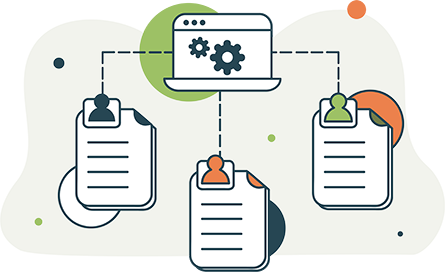If you’ve ever worked closely with a creative department or design agency, this situation probably sounds familiar. You’ve commissioned your creative partners to design (or re-design) a portion of your site, hoping to bolster sales, leads or readership. Creative unveils the new design — something they tout as astoundingly innovative and just plain beautiful.
You hate it.
As an analyst, or perhaps one of those responsible for your company’s bottom line, this unconventional design rattles your nerves. Will users know where to click? Is the focus on the product? Was creative even listening when you briefed them on your KPIs?
What do you do?
(A) Kill the idea. Kill it with fire.
(B) Go live with the design, then cower under your desk afraid that sales will tank.
(C) Engage in a stalemate with the creative department, where nothing gets done.
(D) Compromise.
You obviously don’t want to be the person who shuts down innovation within your company. But your instinct (plus years of experience and data) tell you that this design is pushing the boundaries a little too far. If you’re to avoid stalling progress (the worst option), your only option is compromise.
First of all, think of it this way: all organizations need both sides of their “brains.” While it’s easy to dismiss others’ efforts as a waste of time on both sides (as Ritika Puri of Work Intelligent.ly points out), this creative/analytical friction can often create some of the best work. Here are some pointers for doing it well.
- Meet in the middle. While we don’t advise “Frankensteining” the original design beyond recognition, there are usually ways to solve whatever bothered you about the design without completely compromising the aesthetic. This will challenge you to pinpoint exactly what it is that you feel will inhibit performance. For example: your creative department has created a beautiful, immersive new parallax design for your site, but you’re afraid it will compromise your search visibility. Why not try a combo approach, as Janet Driscoll Miller suggests in the Search Engine Land blog.
- Measure what counts. It’s no longer completely about old school vanity metrics, like SERP rankings or hits. While these are important to visibility, your real business goals are likely much different. Think about what users need to see, read or interact with to move further down the funnel, to conversion. Better yet, look at whatever primary research or analytics you have around user experience. What experience and/or messaging is likely to nudge the customer toward the next step? Since new and artfully executed experiences are more likely to capture attention, that creative team might not be so wrong after all. The fallback: compromise (see above).
- A/B Test. The data doesn’t lie. If you reach a stalemate, agree to serve up two different versions and let the user behavior tell you what’s working. Using a real-time analytics tool like FoxMetrics, you can quickly pinpoint which version of the design is achieving higher engagement rates, and avoid losing time (or revenue) to one that isn’t converting.
- Remember that nothing is permanent. Agility and time to market is increasingly important in today’s digital space. With all of the tools at our disposal, there is no reason progress should come to a halt because team members disagree. Try the techniques listed above, but always remember that if worse comes to worst, you can switch the design back to the way it was before. The key is simply knowing how everything is performing, and being able to react.
Have you ever been in a situation where you’ve had to find compromise between analytics/business and creative? Please tell us about it in the comments below.
If you’re thinking of personalizing the experience of your visitors, try FoxMetrics for free and Subscribe to our Newsletter get recent updates and news.

